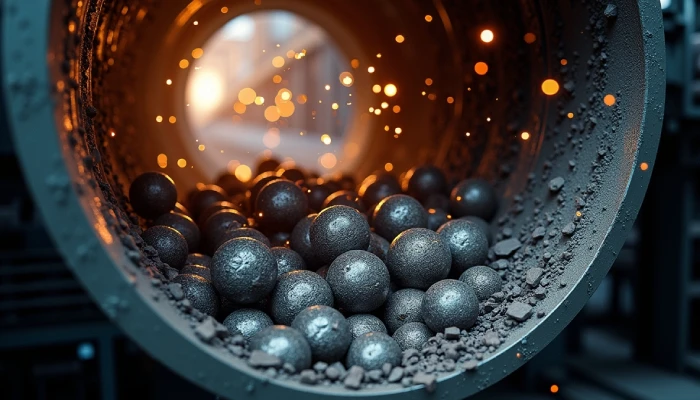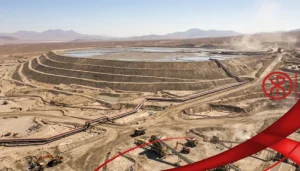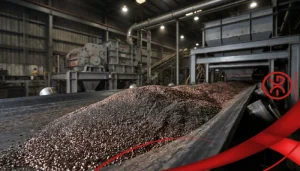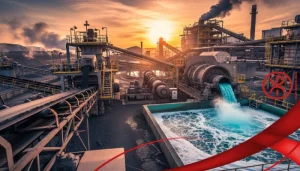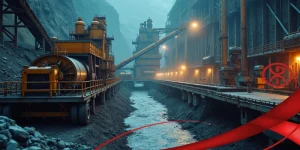In the mining, cement production, and mineral processing industries, grinding mills are essential for reducing particle sizes and preparing materials for further processing. At the heart of these mills lies grinding media—small balls, rods, or other shapes made from durable materials like steel, ceramics, or alloys—that perform the actual grinding action. However, one critical challenge in optimizing mill performance is managing the grinding media wear rate, which refers to the rate at which these media degrade over time due to friction, impact, and corrosion.
Understanding the grinding media wear rate is vital for operators and engineers because excessive wear leads to increased operational costs, frequent replacements, and reduced efficiency. By identifying the key factors that influence wear, professionals can implement strategies to minimize it, extending the lifespan of grinding media and improving overall productivity. This article, prepared by the Alpha Grinding Media team, explores the primary factors affecting grinding media wear rate in a straightforward and educational manner. We aim to provide practical insights that help you select and maintain grinding media effectively, ensuring reliable performance in your operations.
What Is Grinding Media Wear Rate?
The grinding media wear rate is a measure of how quickly grinding media loses mass or volume during milling operations, typically expressed in grams per ton (g/t) of processed material or as a percentage of initial weight over time. This wear occurs through three main mechanisms: abrasion (surface scraping from particle friction), impact (chipping or cracking from collisions), and corrosion (chemical degradation from the mill environment).
In ball mills, for instance, media wear can account for up to 50% of total grinding costs, making it a significant economic factor. Monitoring wear rate involves regular sampling and weighing of media, often using formulas like the Bond Work Index to predict and control it. A low wear rate indicates efficient media selection and operating conditions, while a high rate signals the need for adjustments. By grasping these basics, you can better appreciate how various influences contribute to wear and take proactive steps to mitigate them.
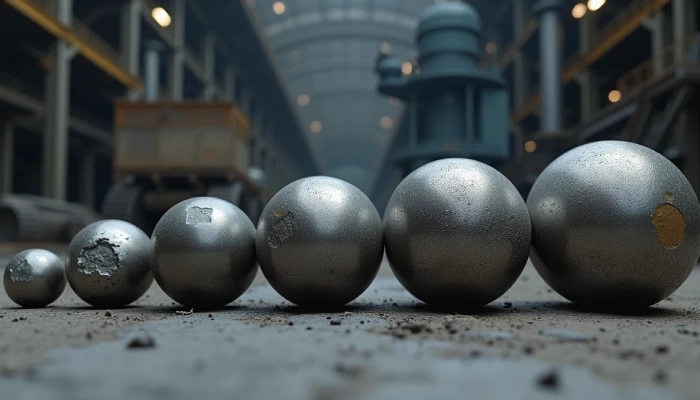
Key Factors Affecting Grinding Media Wear Rate
Several interconnected factors determine the grinding media wear rate. These range from material properties to operational parameters and environmental conditions. Below, we delve into each, explaining their impact and offering guidance on management.
1. Material Composition of Grinding Media
The inherent properties of the grinding media material play a foundational role in determining its wear resistance. High-chrome cast irons, forged steels, and ceramic media each exhibit different levels of hardness, toughness, and corrosion resistance, directly influencing the grinding media wear rate.
Harder materials, such as those with high chromium content, resist abrasion better but may be more brittle under impact, leading to spalling or cracking. Softer materials might wear faster through abrasion but handle impacts with less fracture risk. The choice depends on the ore type: for abrasive ores like quartz, harder media reduces wear, while for softer, corrosive ores, corrosion-resistant alloys are preferable.
To optimize, select media with a balanced microstructure—fine carbides in a tough matrix—to withstand combined stresses. Regular metallurgical analysis can help refine selections over time, ensuring the grinding media wear rate aligns with your mill’s demands.
2. Ore Characteristics and Abrasiveness
The ore being ground is a primary driver of grinding media wear rate, as its hardness, abrasiveness, and mineral composition dictate the intensity of interaction with the media. Ores with high silica content, such as gold or copper ores, are highly abrasive, accelerating surface wear through constant scraping.
Hardness, measured on the Mohs scale, correlates directly with wear: softer ores like limestone cause less abrasion but may introduce corrosive elements if acidic. Particle size distribution also matters—finer feeds increase contact points, potentially raising wear, while coarser feeds emphasize impact.
Managing this factor involves ore characterization through tests like the Bond Abrasion Index, which quantifies abrasiveness. Blending ores or pre-treating them can moderate effects, helping maintain a stable grinding media wear rate and avoiding spikes in replacement needs.
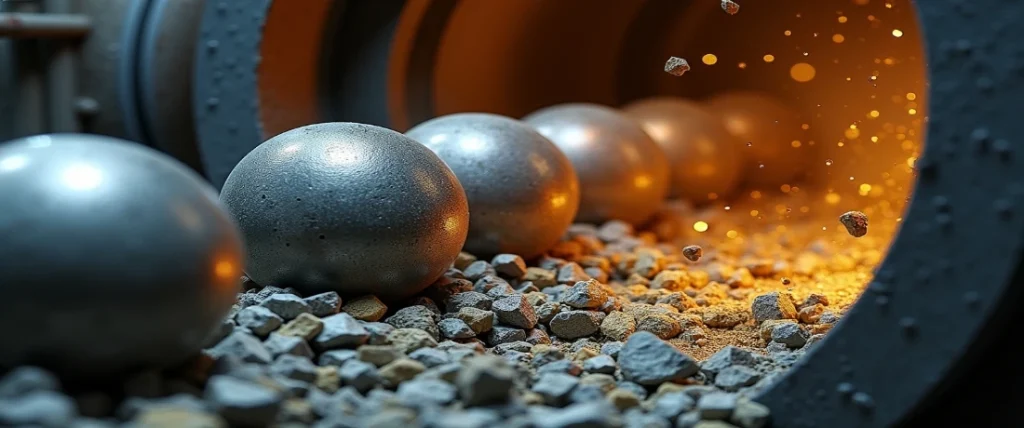
3. Mill Operating Parameters
Operational settings in the grinding mill significantly amplify or mitigate grinding media wear rate. Speed, charge level, and liner design are among the most influential.
Mill speed affects the cascading or cataracting motion of media: speeds too high increase impact forces, causing chipping; too low reduces grinding efficiency but also wear.
The media charge—percentage of mill volume filled by balls—impacts crowding: overcharging leads to sliding and abrasion, undercharging to excessive impacts. Liner profiles influence media trajectories, with worn liners accelerating wear by altering flow patterns.
To control these, implement automated monitoring systems for speed and power draw, adjusting based on real-time data. This precision tuning can reduce grinding media wear rate, enhancing energy efficiency as well.
4. Environmental Conditions in the Mill
The internal mill environment, including slurry pH, temperature, and chemistry, profoundly affects grinding media wear rate through corrosion and electrochemical reactions. Acidic slurries corrode steel media, pitting surfaces and accelerating fatigue failure, while alkaline conditions may promote scaling but less corrosion.
Temperature rises from friction can soften media surfaces, increasing susceptibility to wear. Dissolved oxygen or galvanic couples between media and liners exacerbate corrosion.
Mitigation strategies include pH control via lime addition, using corrosion inhibitors in the slurry, or selecting media with protective coatings. Ventilation to manage heat buildup also helps. By stabilizing the environment, operators can lower the corrosion component of grinding media wear rate.
5. Media Size and Distribution
The size and uniformity of grinding media influence grinding media wear rate by affecting contact dynamics and energy transfer. Larger balls provide more impact but wear faster at the surface due to higher stress concentrations; smaller ones favor attrition but may overload with fines.
An uneven size distribution leads to inefficient grinding, where oversized media dominates impacts and undersized ones increase abrasion. Ideal distributions follow a structured curve, starting with larger balls at the feed end and progressing to smaller ones.
Regular audits of media size via sieving ensure even distribution, replacing worn fractions promptly. This approach stabilizes grinding media wear rate and improves grind consistency, reducing overall consumption.
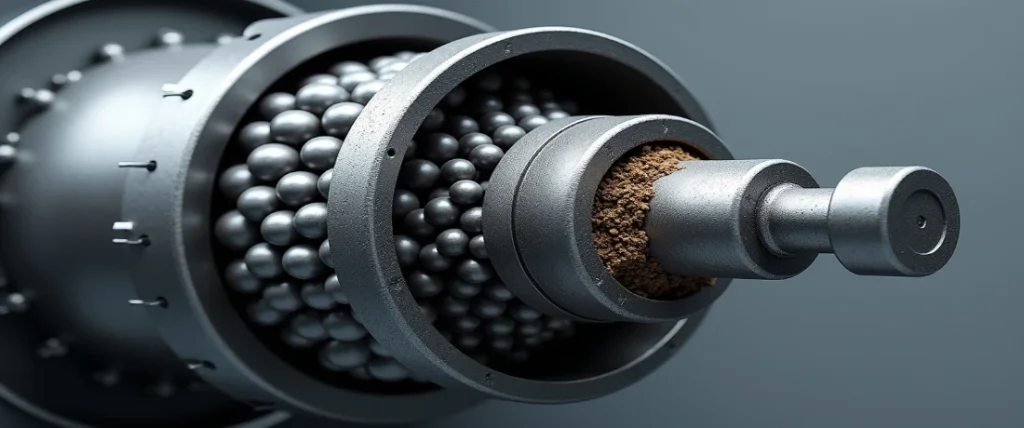
6. Maintenance and Inspection Practices
Poor maintenance routines can inadvertently elevate grinding media wear rate by allowing suboptimal conditions to persist. Infrequent inspections miss early signs of uneven wear or contamination, leading to cascading failures.
Liner wear, for example, alters mill geometry, forcing media into harsher paths. Contaminated media (e.g., from tramp metal) introduces hard inclusions that accelerate damage.
Establishing scheduled shutdowns for visual and dimensional checks, coupled with predictive analytics from vibration sensors, prevents escalation. Proactive replacement of marginal media keeps the grinding media wear rate predictable and low.
Strategies to Minimize Grinding Media Wear Rate
Armed with knowledge of these factors, practical strategies can effectively reduce grinding media wear rate. Start with a holistic media selection process: match composition and size to ore and mill specifics, using pilot tests for validation.
Implement process controls like variable speed drives and automated charge management to fine-tune operations. Incorporate wear-resistant liners and regular environmental monitoring to shield media from harsh conditions.
Finally, foster a culture of data-driven maintenance, tracking wear metrics against production KPIs. These integrated approaches can cut wear, yielding substantial savings.
The Role of Quality Grinding Media
High-quality grinding media inherently supports lower grinding media wear rate through superior metallurgy and manufacturing precision. Uniform heat treatment ensures consistent hardness, while clean production minimizes defects that seed cracks.
Sourcing from reliable suppliers guarantees traceability and performance consistency, avoiding variability that spikes wear. At Alpha Grinding Media, our products are engineered for durability across diverse applications, helping you achieve optimal results without compromise.
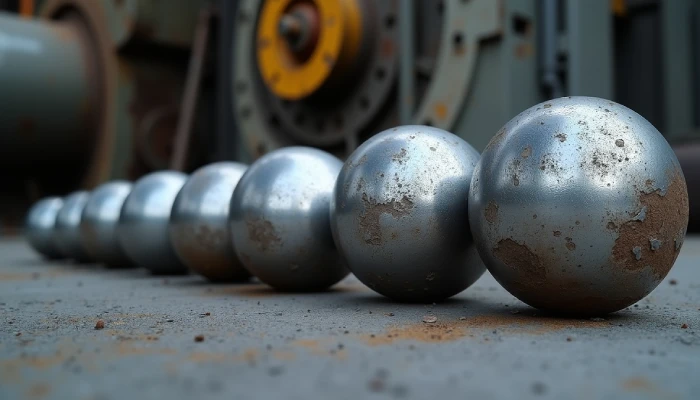
Conclusion
The grinding media wear rate is shaped by a complex interplay of material, ore, operational, environmental, sizing, and maintenance factors. By systematically addressing these influences—through informed selection, precise control, and diligent upkeep—mill operators can significantly extend media life, boost efficiency, and control costs. This educational overview underscores the importance of proactive management in grinding operations. For tailored advice and premium grinding media solutions, visit the Alpha Grinding Media website and elevate your milling performance today.
Frequently Asked Questions About Grinding Media Wear Rate
1. What is grinding media wear rate?
Grinding media wear rate measures the mass loss of media during milling, typically in g/t, influenced by abrasion, impact, and corrosion mechanisms.
2. How does ore abrasiveness affect wear rate?
Highly abrasive ores like silica-rich ones increase surface scraping on media, elevating grinding media wear rate; testing via abrasion indices helps quantify this.
3. Can mill speed influence grinding media wear?
Yes, excessive speed heightens impacts, raising grinding media wear rate, while optimal speeds (70-80% critical) balance efficiency and durability.
4. How to reduce grinding media wear rate?
Select wear-resistant media, control pH and charge levels, and perform regular inspections to minimize grinding media wear rate effectively.

